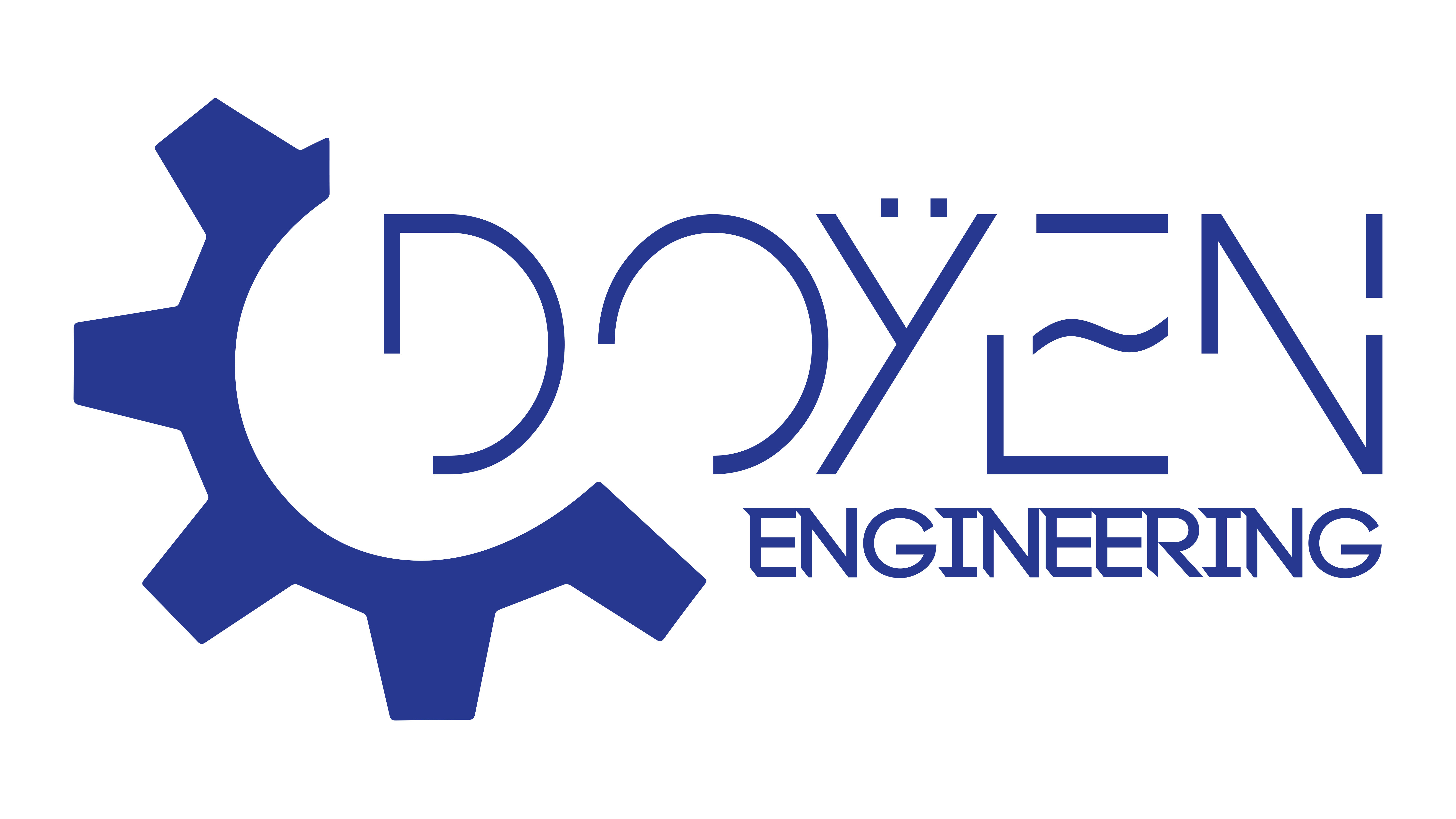
Introduction to Feedback in Control Systems
Definition and Purpose
Feedback in control systems refers to the process of using information about the output of a system to make adjustments that achieve desired results. It plays a vital role in maintaining stability and improving performance. Consider how a thermostat maintains room temperature by adjusting heating based on feedback readings from the environment.The purpose of feedback includes:
- Stability: Ensures systems remain stable under varying conditions.
- Accuracy: Enhances precision in system operations.
- Error Correction: Allows for adjustments when outputs deviate from desired outcomes.
Historical Overview
The concept of feedback can be traced back to the early days of engineering. The first notable application emerged in the 18th century with James Watt's steam engine, which employed a centrifugal governor to regulate speed. This innovation paved the way for modern feedback control systems.In the 20th century, advancements in electronics led to the development of more sophisticated systems, revolutionizing various industries such as aerospace, automotive, and robotics. These historical milestones illustrate how feedback mechanisms have evolved, becoming integral in today’s technological landscape.

Types of Feedback Control Systems
Open Loop vs. Closed Loop Systems
Understanding the difference between open loop and closed loop systems is fundamental in control system design. In an open loop system, outputs are not compared against desired outcomes—think of a toaster that simply heats for a set duration, regardless of the actual bread's state.In contrast, closed loop systems use feedback to adjust operations. For example, an automatic washing machine senses the water level and adjusts accordingly to ensure optimal washing. This distinction highlights two approaches:
- Open Loop Systems:
- No feedback control
- Simplicity and often lower cost
- Limited to predictable environments
- Closed Loop Systems:
- Constant feedback and adjustments
- Higher accuracy and performance
- More complex to design and implement
Negative vs. Positive Feedback
Another important classification involves negative and positive feedback mechanisms. Negative feedback occurs when the output of a system counteracts the input, promoting stability. A common illustration is a home thermostat: if the temperature exceeds the set point, the heater turns off, preventing overheating.Conversely, positive feedback amplifies the output, pushing the system towards a specific goal. For instance, in a public address system, if the microphone picks up sound from the speakers, it can create a feedback loop, leading to the dreaded screeching sound.To summarize:
- Negative Feedback:
- Stabilizes and maintains systems
- Prevalent in most control processes
- Positive Feedback:
- Amplifies change
- Can lead to instability if uncontrolled
Understanding these types of feedback control systems allows engineers and technicians to choose the appropriate strategy for specific applications, ensuring desired outcomes and efficient performance.

Key Components of a Feedback Control System
Sensors and Actuators
Delving deeper into feedback control systems, it’s essential to understand their key components—sensors and actuators play a pivotal role. Sensors are responsible for measuring the output or the state of a system, while actuators implement changes based on the controller’s decision.For instance, in an automotive climate control system:
- Sensors monitor temperature, humidity, and air quality.
- Actuators adjust the airflow by controlling fans and vents.
These components work harmoniously to ensure that the desired climate is achieved and maintained.
Controller and Processor Units
The controller and processor units are the brains of the feedback control system. They analyze the data received from sensors and determine the necessary actions for actuators to take.A typical controller will perform several functions:
- Data Analysis: Interprets sensor data to assess performance.
- Decision Making: Compares outputs to desired targets and calculates required adjustments.
- Signal Generation: Sends commands to actuators based on computed decisions.
For instance, in home heating systems, the thermostat acts as the controller that processes the temperature readings and instructs the heater to turn on or off to maintain comfort.Together, sensors, actuators, and controllers form the backbone of an effective feedback control system, working together to create a responsive and efficient environment that adapts to changing conditions. Understanding these components enables engineers to design better systems tailored to specific needs.
Benefits of Feedback in Control Systems
Enhanced Stability and Performance
Building on the importance of key components, the benefits of feedback in control systems become evident. One of the primary advantages is enhanced stability and performance. A feedback system allows continuous monitoring and adjustments, ensuring that processes do not deviate far from their desired outcomes.For example, in an aircraft autopilot system:
- Continuous Adjustments: Elevators and rudders are adjusted in real-time for smooth flying.
- Reduction of Oscillations: With feedback, the system minimizes unnecessary oscillations, leading to a safer flight experience.
This emphasis on stability translates into reliable, high-performance operations across various applications.
Improved Accuracy and Precision
Another significant benefit of feedback is improved accuracy and precision in control systems. By continuously comparing actual outputs with desired outcomes, feedback mechanisms correct errors quickly and effectively.In the realm of manufacturing, consider CNC machines that produce components with high precision:
- Real-Time Corrections: Sensors detect any discrepancies in dimensions, and actuators make immediate adjustments.
- Minimized Waste: Accurate processes reduce the chance of errors, leading to less material waste.
By leveraging feedback in control systems, industries can achieve remarkable accuracy, resulting in better quality products and higher customer satisfaction. Emphasizing these benefits showcases why feedback mechanisms are integral in designing effective control systems across diverse sectors.

Applications of Feedback Control Systems
Automotive Industry
Transitioning from the benefits of feedback control systems, their applications span a wide range of industries, prominently including the automotive sector. Modern vehicles are equipped with advanced feedback mechanisms that enhance performance, safety, and efficiency.For instance, consider the adaptive cruise control feature:
- Real-Time Monitoring: Sensors continuously monitor the distance to the vehicle ahead.
- Automatic Adjustments: The system adjusts speed to maintain a safe following distance, helping to prevent accidents and improve driving comfort.
Feedback control systems are also used in stability control systems that prevent skidding and loss of control during abrupt turns or adverse conditions.
Aerospace Engineering
Aerospace engineering exemplifies another critical application of feedback control systems. In this field, precision and reliability are paramount. Feedback systems help maintain stable flight conditions and ensure the safety of both passengers and cargo.Take the example of fly-by-wire technology used in modern aircraft:
- Flight Control Systems: The pilot’s inputs are processed by flight control computers that adjust control surfaces based on real-time conditions, ensuring smooth flight.
- Redundancy and Safety: Multiple feedback loops ensure that even if one control system fails, backups can take over, providing a high level of safety.
In both the automotive and aerospace industries, feedback control systems are crucial for achieving optimal performance, safety, and efficiency, reflecting their importance in modern technology and engineering practices.

Feedback Control Systems in Robotics
Role of Feedback in Robotics
Continuing from the diverse applications of feedback control systems, their role in robotics is particularly significant. Feedback mechanisms are vital for robots to operate effectively in dynamic environments, allowing them to adapt to real-time changes and execute complex tasks.For example, consider a robotic arm in a manufacturing setting:
- Precision Handling: Sensors provide feedback about the position and orientation of the arm, allowing for accurate manipulation of components.
- Obstacle Detection: Robots equipped with feedback systems can detect obstacles and alter their paths seamlessly, enhancing safety.
Feedback loops enable robots to learn from their actions, making them more efficient and effective over time.
Challenges and Innovations
While the role of feedback in robotics is crucial, it comes with challenges. Designing systems that can process massive amounts of sensor data quickly and accurately is a significant hurdle.Key challenges include:
- Sensor Limitations: Ensuring sensors provide reliable readings in challenging conditions (e.g., low light, cluttered environments).
- Computational Load: Managing the data processed in real-time without lag.
Despite these challenges, innovations are continuously emerging in the field. For instance:
- Machine Learning: Integrating AI allows robots to improve their feedback mechanisms, learning from past experiences to make better decisions.
- Advanced Algorithms: New control algorithms enable smoother operation and more robust responses to dynamic environments.
The confluence of feedback control systems and robotics is shaping a future where robots operate more autonomously and effectively, pushing the boundaries of what is possible in industries such as manufacturing, healthcare, and service. As technology advances, overcoming challenges leads to smarter, more capable robotic systems.

Importance of Feedback in Industrial Automation
Optimizing Production Processes
Transitioning from the advancements in robotics, feedback control systems play a critical role in industrial automation. They are essential for optimizing production processes, allowing manufacturers to achieve greater efficiency and productivity.For example, in a car assembly line:
- Dynamic Adjustments: Feedback mechanisms constantly monitor assembly times and equipment performance, enabling quick adjustments to maintain a streamlined workflow.
- Resource Allocation: With feedback data, companies can allocate resources effectively, ensuring that machines operate at optimal levels and reducing idle time.
This real-time data and analysis empower companies to make informed decisions, leading to smoother operations.
Ensuring Quality Control
In addition to optimizing production, feedback is crucial for ensuring quality control. Maintaining high standards is essential in any production environment, and feedback systems allow for continual monitoring of product quality.Consider the example of food manufacturing:
- In-line Testing: Sensors can monitor key quality parameters, such as temperature and pH levels, during production.
- Immediate Corrections: Feedback systems can trigger alerts or automatic adjustments if quality deviations are detected, preventing inferior products from reaching the market.
This proactive approach to quality control helps businesses maintain their reputation and meet regulatory standards consistently.In summary, feedback in industrial automation not only helps to optimize production processes but also fortifies quality control measures, creating a foundation for successful and efficient manufacturing environments. As industries continue to evolve, the role of feedback mechanisms will only grow more significant, driving innovation and excellence across various sectors.

Feedback Control Systems in Healthcare
Monitoring and Regulating Patient Vital Signs
As we move from the industrial applications of feedback control systems, it's important to recognize their profound impact in healthcare. Feedback control systems are indispensable for monitoring and regulating patient vital signs, enhancing patient safety and outcomes.In a hospital setting, for example:
- Continuous Monitoring: Devices like ECG monitors and pulse oximeters continuously collect data on heart rate and oxygen saturation levels.
- Automated Alerts: If vital signs deviate from normal ranges, these systems can automatically alert healthcare providers, allowing for rapid intervention.
This real-time feedback is crucial for timely decision-making and can be the difference between life and death in critical situations.
Enhancing Medical Equipment Performance
Feedback control systems are also vital for enhancing the performance of medical equipment. Instruments must meet strict accuracy and reliability standards to provide effective patient care.Consider the role of insulin delivery systems for diabetes management:
- Smart Pumps: These devices use feedback loops to adjust insulin delivery based on continuous glucose readings, ensuring patients receive the optimal dosage.
- Calibration: Regular feedback allows for the calibration of diagnostic equipment, improving accuracy over time.
Through the integration of feedback control systems, healthcare providers can ensure that medical equipment operates at peak performance, delivering precise and reliable care.In essence, feedback control systems are a cornerstone of modern healthcare, allowing for continuous patient monitoring and improved medical technology performance. As the industry progresses, the importance of these feedback mechanisms will continue to play a critical role in enhancing patient care and outcomes.
Feedback Control Systems in Environmental Monitoring
Controlling Pollution Levels
Building upon the significance of feedback control systems in healthcare, their role extends into environmental monitoring as well. Feedback loops are essential for controlling pollution levels, helping communities maintain healthier air and water quality.For example, consider a city's air quality monitoring system:
- Real-Time Data Collection: Sensors placed throughout the city continuously measure pollutants such as carbon monoxide and particulate matter.
- Regulatory Response: If pollution levels exceed safe thresholds, the system can trigger alerts, prompting immediate action such as issuing health advisories or adjusting traffic flows to reduce emissions.
This proactive approach not only protects public health but also informs long-term environmental policies.
Managing Energy Consumption
In addition to pollution control, feedback in environmental monitoring is crucial for managing energy consumption. As society shifts towards sustainable energy practices, feedback systems help optimize the use of resources.Take smart grids as a prime example:
- Dynamic Load Balancing: Feedback mechanisms monitor energy demand in real-time, adjusting power distribution to ensure efficiency.
- User Feedback: Home energy management systems allow consumers to receive real-time data on their usage, promoting conscious energy consumption and encouraging conservation behaviors.
By employing feedback control systems, both authorities and individuals can significantly impact environmental sustainability and energy efficiency.In summary, feedback control systems play a vital role in environmental monitoring by controlling pollution levels and managing energy consumption. Their capabilities offer innovative solutions to promote public health and encourage sustainable practices, underscoring the importance of feedback mechanisms in addressing today’s environmental challenges.

Feedback Control Systems in Home Automation
Smart Thermostats and Lighting Systems
Shifting from environmental monitoring, feedback control systems have revolutionized home automation, making everyday living more convenient and energy-efficient. Smart thermostats are a prime example of how feedback mechanisms enhance comfort and efficiency.
- Adaptive Learning: These devices learn your schedule and preferences, automatically adjusting temperatures based on real-time feedback from sensors that measure indoor and outdoor conditions.
- Energy Savings: By optimizing heating and cooling patterns, smart thermostats can significantly reduce energy bills and minimize environmental impact.
Similarly, smart lighting systems utilize feedback:
- Motion Detection: Lights can automatically turn on or off based on detected movement, ensuring that energy isn’t wasted in unoccupied rooms.
- Ambient Adjustments: Some systems adjust brightness based on natural light levels, creating a comfortable living environment while conserving energy.
Security and Surveillance Applications
In addition to HVAC and lighting, feedback control systems greatly enhance home security and surveillance. Modern security systems utilize sensors and feedback mechanisms to ensure the safety of residents.For instance:
- Real-Time Monitoring: Cameras and motion detectors provide continuous feedback, alerting homeowners to potential intrusions via smartphones or alarms.
- Automated Responses: In response to detected motion, security cameras can initiate recordings and notify emergency services, allowing for immediate action.
These systems not only provide peace of mind but also contribute to a proactive approach in home security.
The Importance of Feedback in Control Systems
In conclusion, feedback control systems in home automation—including smart thermostats, lighting systems, and security applications—demonstrate their importance in creating a connected, efficient, and secure living environment. Emphasizing feedback mechanisms in these systems not only enhances convenience but also fosters sustainability and increased safety, showcasing the critical role they play in modern-day living. As technology advances, the integration of feedback control systems will continue to improve the quality of life in our homes.





